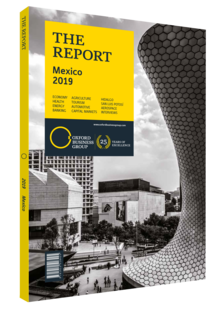Tourism attractions in the State of Hidalgo benefit from proximity to Mexico City
As recent years have seen Hidalgo place a greater emphasis on its tourism sector, private companies are also recognising the potential of the small but strategically located state. In November 2018 leading US water park and resort provider Great Wolf Lodge announced that it had chosen Hidalgo as the site of its first facility outside of the US and Canada. After analysing several Mexican states, the company decided that Tepeji del Río was the best place to reach the largest market in the country: the Mexico City metropolitan area. “We are targeting customers who will arrive by car from the centre of the country and can reach us in no more than two and a half hours,” Mauricio Campos, country lead for Mexico and director of the Hidalgo project at Great Wolf Lodge, told OBG. “If you ask people to travel four hours, you are competing with the beaches and coastal areas, which is not what we want to do.”
Central Offerings
Great Wolf’s investment is in line with Hidalgo’s tourism strategy to position itself as one of Mexico’s leading inland destinations, providing alternatives to the sea and sand for which the country is known globally. Hidalgo is perhaps most famous for being home to six of Mexico’s Pueblos Mágicos (Magical Towns): Huasca de Ocampo, Huichapan, Mineral del Chico, Real del Monte, Tecozautla and Zimapán. Other attractions of the state include its unique cuisine – such as barbacoa and pastes – three UNESCO World Heritage sites, a network of over 100 water parks, mountains near the capital of Pachuca, and 176 estate properties that have been the production locations of multiple films and TV series. These offerings are supported by the state’s proximity to Mexico City and its connectivity to the country’s busiest highway, Carretera 57, which supplies a significant flow of tourists.
The number of foreign visitors to Hidalgo increased more than three-fold between 2009 and 2014, when it peaked at 2.61m before dropping back in subsequent years. According to the statistics agency within the Secretary of Tourism, 2.7m people visited the state in 2018, the latest year for which figures are available. Tourism accounts for approximately 12% of employment in Hidalgo and 1.5% of the state’s GDP.
Integration Opportunities
Tourism has lent support to many municipalities in Hidalgo, according to the OECD, which says that strengthening the sector can help the state tackle one of its major challenges: the large north-south divide. The southern part of the state, closer to Mexico City, is at a higher socio-economic level than the mountainous north. The organisation says a stronger tourism sector could help generate formal employment in rural areas dominated by agriculture, while the north can particularly benefit from developing and capitalising on “the quality of its natural and environmental conditions”. Agreeing that there is potential in the sector, Omar Fayad Meneses, the state governor, inaugurated the Consultative Council for Sustainable Tourism Development in April 2019. The council, which comprises 65 key figures from the private and public sectors, was formed to propose and apply the strategies necessary to strengthen tourism in the state.
Although the OECD acknowledges that the government’s plan for tourism highlights the primary hindrances and opportunities in the sector, the organisation believes there is room for greater “integration with other sectors, coordination among municipalities, professionalisation and quality data”. Regarding the first point, there are some signs that integration is on the way. One of the tasks that Fayad has assigned to Hidalgo’s new tourism council is to leverage ICT to promote the state’s natural riches and visitor attractions. Furthermore, a June 2019 agreement with American Tower to build telecommunications infrastructure in the state includes bringing 4G connectivity to the Magical Towns to improve tourists’ experiences. Indeed, as Hidalgo works to become more modern and competitive in other sectors, overlapping opportunities with tourism have been emerging as a way to ensure economic development spreads to all corners of the state.
You have reached the limit of premium articles you can view for free.
Choose from the options below to purchase print or digital editions of our Reports. You can also purchase a website subscription giving you unlimited access to all of our Reports online for 12 months.
If you have already purchased this Report or have a website subscription, please login to continue.

